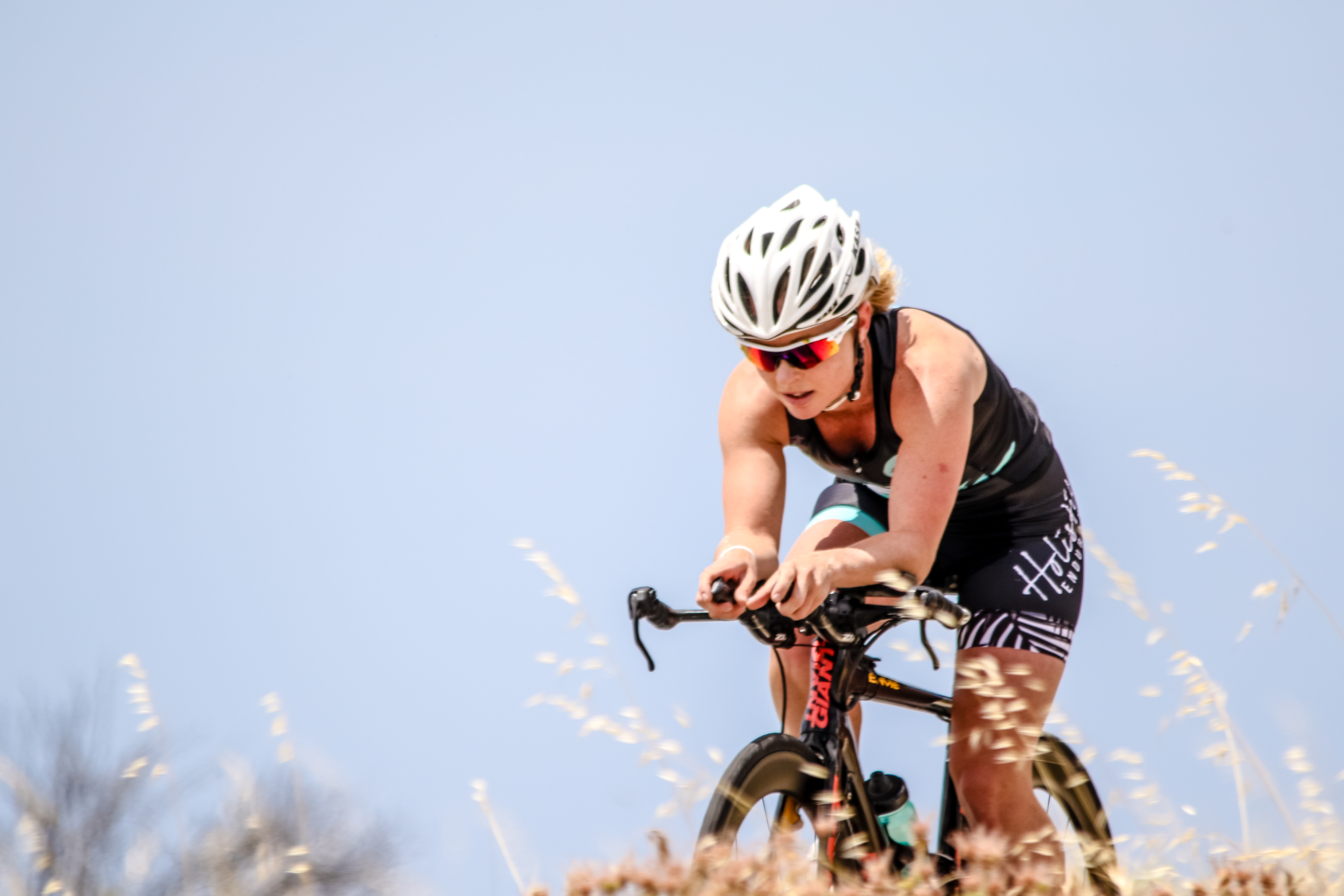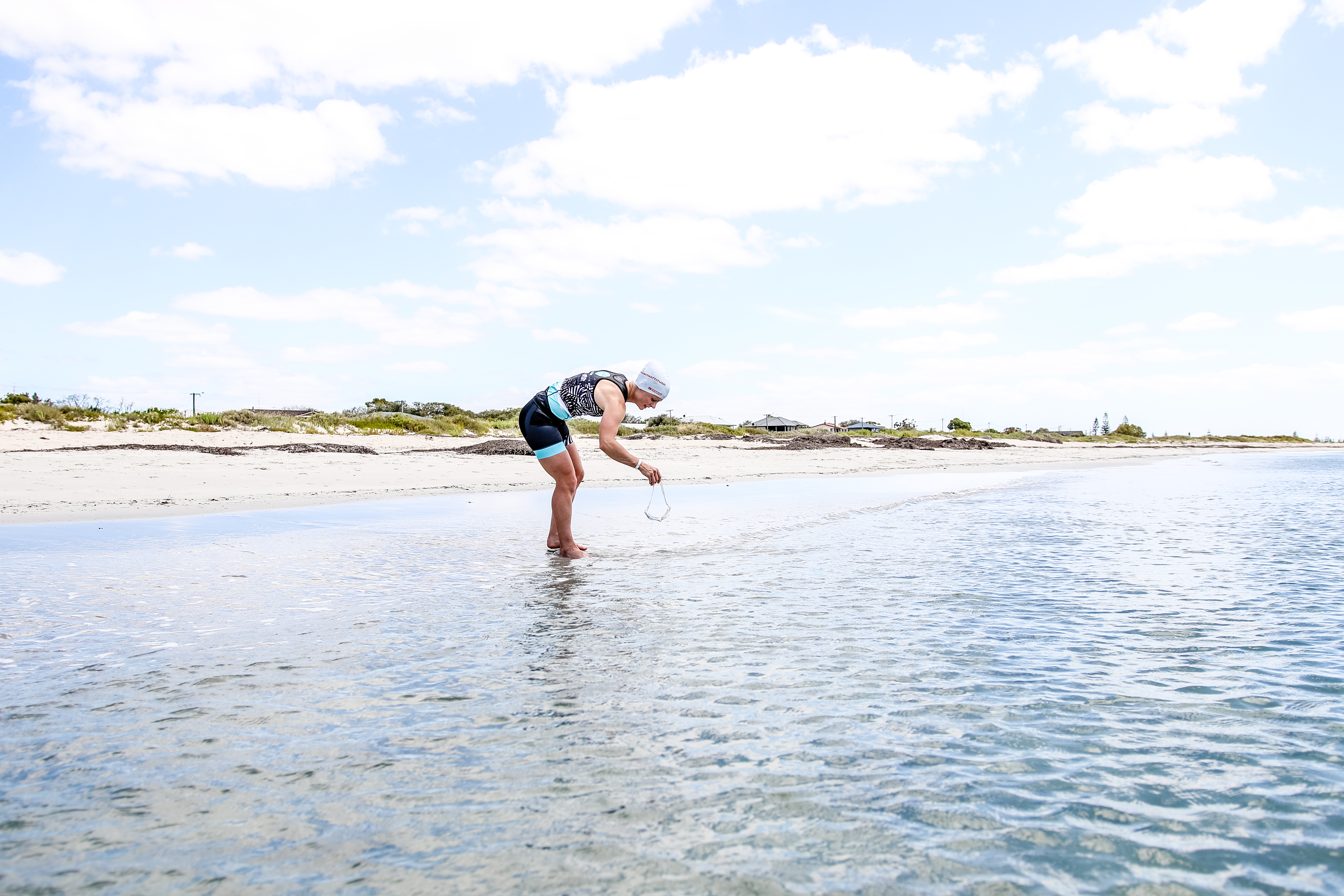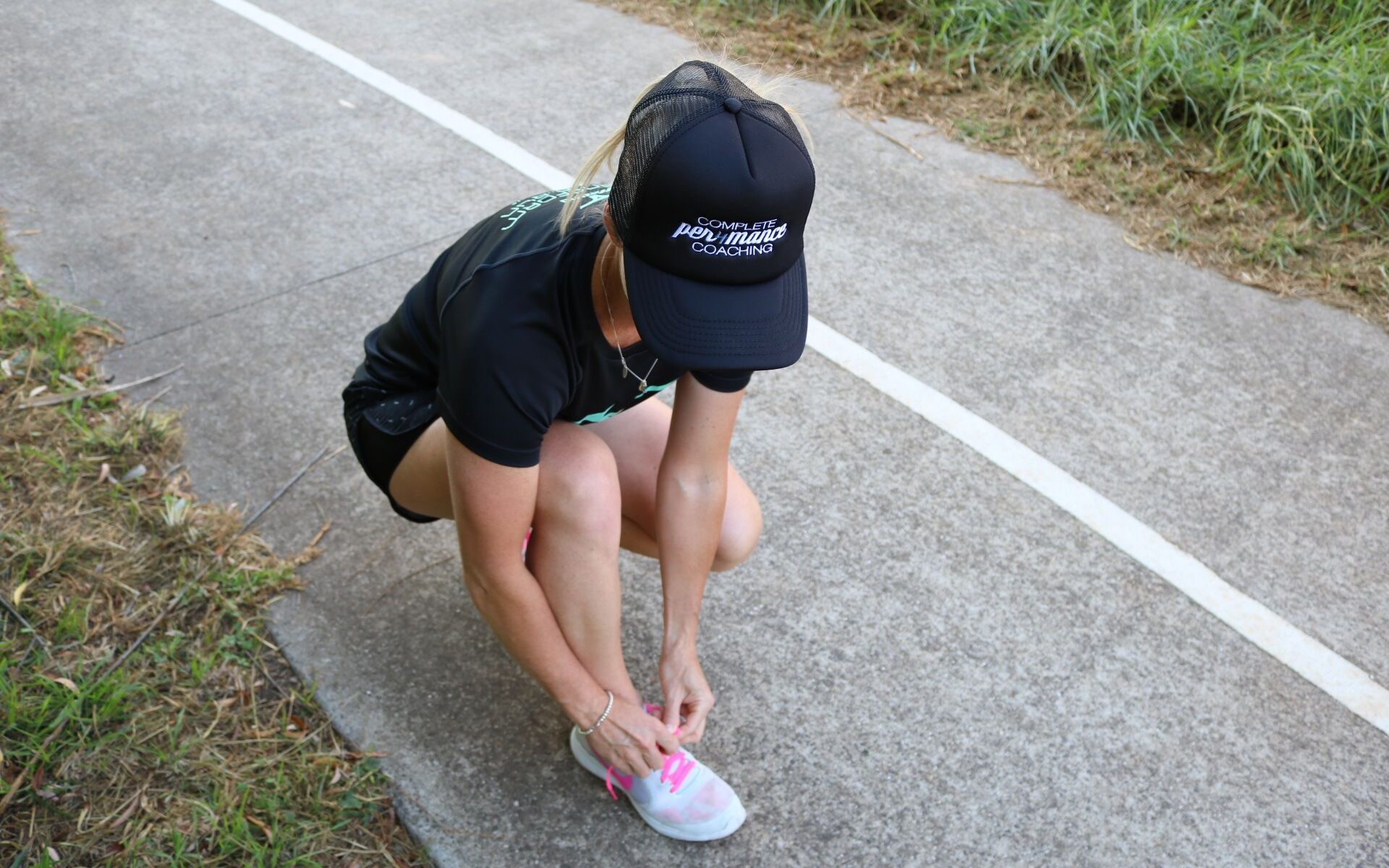Breaking down the sport of triathlon and answering your most common questions
Triathlon can be a daunting sport. There is so much to learn, three sports to try and master, varying race distances, all the gear and what about the lingo?! So we surveyed a number of triathletes from beginners through to experienced athletes to answer the most common triathlon questions. Everything from what gear you need, what to wear, training tips and race day advice. There’s something to learn for everyone!
ALL THE GEAR:
What gear do I need to start?
Triathlon is known for being an expensive sport. There are three different disciplines that all need specific gear. It can be easy to get caught up in the hype and the marketing of the various equipment and gadgets, but honestly, most people can get started without having to re-mortgage their home!
Swim – a basic pair of goggles, an old swim cap, and a pair of bathers
Bike – any bike will do, borrow one if you like! Runners or bike/triathlon shoes, helmet and bike knicks and jersey.
Run – a good pair of runners and anything to run in and you are set!
Once you get into the sport you can then look at upgrading your gear and purchase training tools such as pool toys, garmin/multisport watch, triathlon race gear… the list can then become endless.
What do I wear during a triathlon?
Good news is you can wear anything you feel comfortable in as long as your torso is covered. But if you head to a race, you will see most athletes wear a one or two piece tri suit. Essentially it’s a lycra based suit that is firm fitting. This is a triathletes outfit of choice as it helps avoid drag in the water, minimizes chafe on the bike and run plus – it’s more aero than a baggy pair of shorts and t-shirt. There are lots of different brands / kits available and can range from $50 to $200+. Make sure you try before you by, as sizes and fitting can vary between brands.
What do I wear under my trisuit and my cycling kit?
For guys – nothing! That’s right, no underwear necessary! So leave those briefs at home. For the ladies, as with the guys, no briefs needed (you read right!), and for your support up top, simply wear your normal running / sports bra. Some tri kits come with a built in sports bra – but these aren’t designed for support, so you will want to wear something underneath.
Apart from aerobars, what else makes a tri-specific bike different from a road bike?
The key difference is the frame geometry. Typically a triathlon bike has a shorter top tube and the seat tube/post is closer to vertical than a road bike. These angles bring you forward on the bike, place your hips over the cranks and therefore in a more aero position increasing efficiency while opening up your hip angle to make it easier to run off the bike.

Do I need a wetsuit?
Depending on where you race and the climate, you generally don’t NEED a wetsuit, but you will probably want one. The main benefit of a wetsuit for racing is to increase buoyancy, which will make you faster in the water. (And who doesn’t want to swim faster!) The other benefits including keeping you warm, and can also make you feel secure in the open water. Wetsuits can range from around $200 and go right up to $1000+, depending on your level and your budget, aim for one somewhere in the middle. But the key is making sure you get the right fit, so don’t buy your first wetsuit online, go in store and get professionally fitted.
What’s the difference between triathlon shoes and road cycling shoes?
The main difference is triathlon bike shoes have one Velcro strap (sometimes two), whereas road cycling shoes can have three straps, buckles or ratchets. So triathlon shoes are far easier to slide on and off in and out of transition, making you faster. So if you are looking at purchasing your first pair of bike shoes and plan to continue in triathlon, I suggest buying a triathlon specific bike shoe first. You can always buy a road cycling pair specifically for training/long rides later on if the funds allow.
What is a power meter and do I need one?
A power meter is a device fitted to a bike that measures the power output (watts) of the rider. Rather than just monitoring your work rate by heart rate, speed or perceived effort, power meters provide a quantitative way to assess how hard you are actually working so your bike session can become very specific.
Do you need one? This can depend on what you want to get out of your training. There are lots of benefits including being able to train more specifically, but you do need to be able to interpret the information (data) or have a coach who can, and it does come at a cost. Power meters can range anywhere from $500 up to $1500+. So before you part with your hard earned money do some research and understand whether the investment is right for you.
What is the difference between clincher and tubular tyres?
Clincher: The most common type of tyre which consists of an outer tyre and an inner tube fitted into the clincher wheel’s rim.
Tubulars (or tubs): Is a combination of a tire and tube in one. The tube is sewn inside the tyre casing and the tyre is fixed to a bike rim with special glue.
Tubeless: Are becoming more popular and is a style of tyre where no inner tube is required. The tyre sits directly on a special type of bike rim to create a tight seal and liquid sealant is used to create a strong seam between the tubeless tyre and the rim. Note you can use tubes in tubeless tyres but you CANNOT go tubeless with clinchers.
TRAINING
Is riding on the road similar to riding on a trainer?
Indoor sessions on the trainer can be very beneficial, in particular for those who are time poor, and during those cold, dark, wet winter months. Indoor trainers can allow you to follow a very specific session without having to worry about the elements or risks of riding on the road, and value for time, the indoor trainer wins hands down. A 60min indoor session can roughly equate to 80-90min of riding outside as you are constantly applying pressure to the pedals and there is no freewheeling or stopping for lights. A downside of riding indoors is you don’t get to use and practice your riding and bike handling skills, and some muscle groups become over worked and others underworked due to the static nature of indoor riding. So adding a mix of indoor and outdoor sessions into your program will provide you with the most benefit.
What is a negative split?
A common term used in running, but can be applied to swim and bike also, which involves completing the second half of a session / race faster than the first half. So you intentionally set out at a slightly slower initial pace and then increase your pace in the second half of the race – effectively finishing stronger/faster. It is commonly used to ensure athletes don’t go out too hard too early in a race, and can be useful for those athletes who are not good at pacing themselves.
What is a brick session?
Brick sessions, also known as ‘combo’ sessions traditionally involve the combination of bike and run in one session to help train you for the specifics of running off the bike on race day. Sessions can vary but can include repeated short bike/run sets ie 4 x 10min bike, 3min run – great for those racing short course, or longer sets for those racing longer such as 2 x 30min bike, 10min run or a long trainer set or road ride followed by a run off the bike – simulating race day conditions. Brick sessions are typically incorporated into a training program 8-12weeks out from race day.
Can I use the same goggles in the pool as open water?
Of course! But it is important to consider the function of different types of swimming goggles and why there are different types available. Open water specific goggles are designed with a slightly larger lens providing better peripheral vision. Comfort should be considered also, as some pool/competition goggles may not be comfortable to wear for prolonged periods of time. Goggles also come with a variety of lens colours designed for different situations:
Clear lenses – suited for overcast / low light days
Amber/yellow lenses – used for improved visibility in pools
Blue lenses – often used to maximise underwater visibility in the open water
Mirrored or dark lenses – used to reduce sun glare in open water swimming, and sometimes just for looks!

What’s a catch-up drill?
A popular drill for triathletes, the catch up drill is a swim drill designed to help lengthen your swim stroke and develop your front end ‘catch’, as well as allowing swimmers to work on timing of their breath, good body rotation and steady kick. The drill is similar to your normal freestyle stroke action, just with one arm waits out front until the arm arm rotates through and ‘catches up’ before the other arm starts to move. A variation and progression is ¾ catch up where your fully extended hand begins the catch when the recovering arm is 3/4 of the way recovered, becoming closer to a natural freestyle stroke.
RACING
What are the different names and race distances in triathlons?
Whether you are aiming to go long, or striving to go fast (or both!) there are plenty of races and race distances to choose from. The below are standard race distances, but variations of these can be found depending on the race location, event organiser etc.
Ironman Distance: 8km swim / 180km bike / 42.2km run
Half Ironman: 1.9km swim / 90km bike /21.1km run
ITU Long Distance: 2km swim / 80km bike / 20km run
Olympic/Standard Distance: 1.5km swim / 40km bike / 10km run
Sprint Distance: 500-750m swim / 20km bike / 5km run
Mini/Fun/Enticer: 1-300m swim / 8-10km ride / 1-3km run
There are also other variations including:
Aquathon: Swim/run
Duathlon: Run/Ride/Run
Aquabike: Swim/Bike
Do I need a triathlon specific bike to race?
No! You can most certainly use any bike you have as long as it is road worthy and has brakes. As you start out in the sport there is nothing wrong with starting with the bike you already have and you can always upgrade later. As you spend more time in the sport you may introduce clip on areo bars and then look at a time trial bike down the track. But don’t sell your road bike, as these are used over the winter months for most of your training.
I’m afraid of the open water, how can I get more comfortable?
First determine the underlying root of what is causing your anxiety/fear of the open water. Are you afraid of no bottom to stand on or walls to hold onto? Is the distance of the event scaring you? Is it the unknowns in dark murky waters? Or swimming in close proximity to others that causes you to panic? Once you are able to understand your fear, you can work on overcoming it through gradual practice and repetition in training.
If you are nervous about swimming with other people, train with a group and get comfortable with being touched and bumped. Scared of not being able to make the distance? Gradually build up the distance in training until you can complete nonstop in the pool – a good confidence booster! Anxious about no wall to rest on, no bottom to stand and no black line to follow? Practice in the pool by not touching/resting on the walls between laps. Also try closing your eyes while swimming under water and only open them to look up and sight. And make sure you practice in the open water. The more you swim in the open water, the more comfortable you will become with it. And remember it is ok to turn over onto your back, take a breather, catch your breath and calm the nerves. When you feel resettled, simply roll back over and continue.
What should I eat race morning?
This can depend on a lot of factors and can differ from athlete to athlete. Some athletes eat nothing before a race, some get up early and have a big breakfast, while others have something small just to take away the ‘hunger’ feeling. Remember your body has to digest whatever you put into your body before it can utilise it for fuel so if you fill it with a big breakfast the morning of your race, you can be left feeling sluggish and it can lead to stomach. If you fuelled correctly the days leading into your race, your glycogen stores should still be full from the night before, so you don’t have to eat a smorgasbord the morning of your race – no matter the race distance. And remember – don’t try anything new on race day. Practice in training what you plan to do on race day so you can work out what works for you.
What should I eat during a race?
If racing for less than 1.5hours – generally up to sprint distance, you will probably only need water and/or electrolytes. Anything longer than that and you will race better if you take in calories during the race. Again this is very individual, but as a general rule of thumb, aim for 40-50g of carbs per hour on the bike, and 30-40g of carbs per hour on the run. You can have a metabolic efficiency test done to calculate exactly what you burn and so therefore calculate with more certainly what is right for you and is worth doing for those racing longer distances. The majority of your calories should be consumed on the bike and for most people, liquid forms such as gels and/or carbohydrate drinks are the best as it can be harder to consume other forms such as bars while racing. But again, the amount you will need, the type of fuel and the flavours you choose are going to be trial and error, so testing in training is key. Write out a nutrition plan, test in your longer / race specific training sessions, keep note of how you feel based on what you consume and adjust accordingly.
What is bonking?
If you have ever experienced it, you know it’s not fun! Bonking (or hitting the wall) is a term used in endurance sports like triathlon, cycling and running where there is a sudden onset of fatigue and loss of energy which is brought about due to the depletion of muscle glycogen and/or blood glucose levels, along with muscle damage and fatigue. Essentially your body is going into ‘self-preservation’ mode. To continue, you will need to either slow down and/ or increase your carbohydrate intake. Good news is, you can train your body to become bonk proof through training and fuelling strategies, including becoming more fat adapted and more metabolic efficient.
Do I wear socks in a race?
Wearing socks in a race is a personal choice, so I’ll give you the pros and cons and things to consider and you can make the decision yourself.
- Putting on socks takes time, so if you all for saving time, loose the socks!
- Worried about blisters? Put Vaseline on rub points to stop friction
- Socks will keep your feet warmer in cooler races, so consider the conditions.
- Try no socks in shorter races and progress to longer races
- Unsure whether no socks is for you? Practice in training and see!
It takes me forever to get out of my wetsuit, how do I get out of it quickly?
As you are running from the water to transition, start working on getting out of your wetsuit. While running, unzip your wetsuit and pull it down to your waist by the time you get to your transition area. Once at your bike, pull your wetsuit down so that it’s below your knees. Step out of one leg, and tread on the wetsuit to help pull the other leg out. You may need to use your hand to get over your ankle and off your foot. And a pro tip – before putting on your wetsuit at the start of the race, place lubricant on your legs from the knees down and arms from elbows down. This will help the wetsuit slide off easier!
How do I stop my goggles fogging up?
Firstly – to prevent them from fogging in the first place, avoid touching the lens with your fingers. All goggles come with an anti-fog film and touching them rubs this off with the oils of your skin. So if you have a new pair of goggles simply rinse with fresh water after swimming and pop back into a protective case to help them remain fog-free for as long as possible. However once they start to fog up, there are a few tips to prolong their life and allow you to see where you are going!
Spit – although not very glamourous, spit into your goggles and gently rub on the inside of the lens
Baby shampoo – leaves a tiny film on the lens to help prevent the fog
Commercial anti-fog – there are a number of brands on the marker including spays and wipes.
Rinse – if all else fails, simply rinse your face and your goggles with water before starting your swim, this will keep the fog at bay for a little while.
What cadence should I be riding on the bike?
Cadence can be affected by your physiology, bike set up, and race distance among other things. Larger athletes tend to be more efficient at a lower cadence ~70-80rpm using less oxygen for the same effort, whereas lighter riders often have more slow-twitch muscle fibres that are suited to faster spinning (90+rpm). So with this, lower cadence tends to stress the muscular system more, so more taxing on the muscles from a strength perspective, whereas higher cadence tends to stress the cardiovascular system, using more oxygen. Deciding what cadence is right for you can be trial and error – not just on how it impacts your bike performance, but just as importantly how it impacts your run off the bike. So what ultimately matters is that you train yourself to be as efficient as possible on the bike at race pace intensity so you can get off and run well off the bike.
How do I know if I’m able to use my prescription medication while racing?
Any type of medication or supplements should always be checked with ASADA – Australian Sports Anti-doping Authority. Their website provides plenty of information including a prohibited substance list for every sport, allows you to check your substances, apply for therapeutic use exemptions and provides learning and education for athletes. What you consume is your own responsibility so it is important you are educated in this area, and if unsure, always check. Including your supplements.
Sarah Grove
Triathlon Coach
Complete Per4mance Coaching
Written by Coach Sarah, as previously published in Australian Triathlete Magazine
~ ~ ~~ ~ ~ ~~ ~ ~ ~
Sarah is the Director & Head Coach at Complete Per4mance Coaching. Born out of the desire and passion to not just coach but to educate athletes, Sarah shares her 10 years of coaching and racing experience, knowledge and education with athletes of all levels to help them achieve their optimal performance while maintaining a balanced, happy and healthy life.
Contact Sarah to discuss training options for you.



